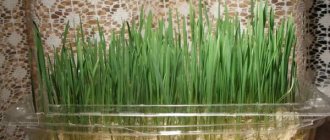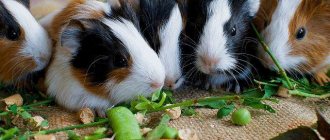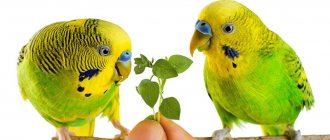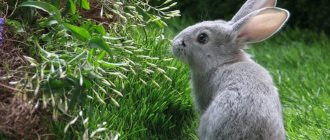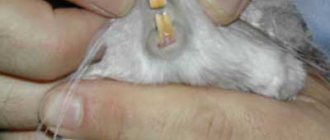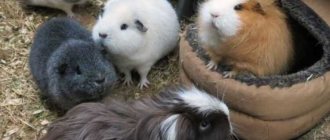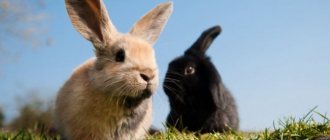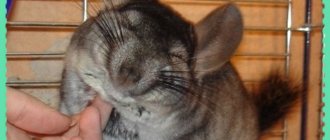The exotic rodent chinchilla is a popular pet with a pretty appearance and excellent health. With proper nutrition and care, a chinchilla can live up to 20 years. It is very important to choose the right diet for your pet. Poor-quality feeding disrupts the functioning of the reproductive and digestive systems and can cause premature death of the rodent.
In the article we will look at feeding chinchillas at home, what can and cannot be given to the animal, the features of the diet and which food is better to choose.
Chinchilla content: permitted and prohibited products
Chinchillas are kept on ready-made pelleted food, but also on grass and grains. Therefore, it is worth noting which products are included in the green sector.
- The following greens would be suitable: salad
- spinach and sorrel
- plantain
- calendula
- coltsfoot
- chicory
- parsley
- jasmine
- blooming Sally
- nettle
- alfalfa
- clover
- mint
- thyme
- chamomile
- Melissa
- goat's rue
- series
- echinacea
- dandelion
- yarrow
- calamus and burdock root
- from the apple tree
- Legumes are extremely healthy and loved, especially: lentils
- white and red beans
- beans
- peas
- soybeans
Food should be varied
- Don't forget about grain crops: wheat
- corn
- and also buckwheat
- rice
- millet
- oats
- and barley
- Vegetables worth noting: carrots
- pumpkin
- young corn
- Bell pepper
- kohlrabi
- zucchini
- zucchini
- squash
- Jerusalem artichoke
For a treat
- As for fruits, you should choose: apples
- pears (in moderation)
- bananas
- figs
- strawberries
- lingonberries
- rosehip
How to choose hay for a chinchilla
Red sector or what not to give to chinchillas:
- Fresh fruits and vegetables
- Nuts and seeds in large quantities. You should also be careful with almonds and pine nuts - they can be given no more than 1-2 times every 2 weeks!
- Herbs that are poisonous to chinchillas: fern
- horsetail
- buttercup
- rushnik
- black nightshade
- dope
- St. John's wort
- white hellebore
- cornflower
- raven eye
- acacia
A few words about the benefits of tea
Something to chew on
The chinchilla needs to be given something to chew on. To do this, you need to give twigs or blocks of safe trees and stones with minerals that are sold for rodents. If you don't provide them with wood, they will chew on shelves and other things in the cage, because it is vital for them to grind down their teeth.
The easiest trees to find in our area that are safe for chinchillas are:
- Apple tree
- wild apple tree
- Pear
- Nut
- The rest of the list of trees that can be given to them, but they are rarely found here.
Before giving chinchillas twigs or tree dies, they must be poured with boiling water and cleaned with a stiff brush so that excess dirt and harmful bacteria are removed. Next, you need to dry them in the oven or electric dryer.
If you use tree dies, you need to fasten them together with aluminum wire, making holes in the middle. And the branches just need to be thrown into the cage.
In addition to pieces of wood, they can also buy something like crayons that contain calcium. It’s better not to look for them yourself, but to buy them at a pet store so that they can tell you which stone will suit your rodent.
Natural treats
The main treat for chinchillas is dried apples. They contain fiber, which promotes proper digestion. Remove toxic waste products and improve overall metabolism in the animal’s body. Like carrots, apples help strengthen fur and the cardiovascular system.
Dried carrots are perfect for constant pampering. It contains vitamins A, B, C, E, a large amount of iron, potassium, calcium. As you know, this is the main supplier of beneficial carotene to the body. Carrots are a natural teeth cleaner. Since it awakens the appetite, you don’t need to give it a lot at once - a pinch a day is enough. Sweet pepper in the same quantity is an excellent vitamin supplement that strengthens teeth, gums and immunity.
Raisins are given to strengthen the heart, as a cure for anemia and weakness. Chinchillas love it very much because raisins contain a lot of sugar. But you should not give more than 1 berry per week. Raspberries can be given fresh or dried, 2-3 berries per week (like hawthorn). It is rich in organic acids and salts of iron, potassium, and copper. Dried hawthorn is more of a medicine than a tasty treat. It helps to calm down, cope with stress, and is also indispensable for intestinal upset. The same amount of pumpkin seeds can be given to improve digestion, skin, and hair follicles.
Chokeberry is also rich in amino acids and rare vitamin P. Together with sweet pepper, they normalize the composition of vitamins and microelements in the chinchilla’s body. In addition to the listed delicacies, you can give nettles, oats, almonds, linden flowers, and fresh (not fried!) sunflower seeds. Chinchillas also love to sip green tea from time to time. It is rich in vitamins B1, B2, K, C, BB, and optimizes the nervous system. Green tea is a powerful antioxidant; it is better not to give more than a teaspoon per week.
A good option when you don’t have time to dry it yourself. Chinchilla photos
I envy those who have the time and opportunity to dry treats for their chinchillas on their own. But such lucky ones, alas, are few. Modernity interprets its own rules and there is not enough time for everything. Ready-made dried treats are our salvation.
Little One "Dried Carrot"
Price: 85₽ | Weight: 200g Sample: 1 pack
Manufacturing company: Little One belongs to the Mealberry company, which produces various types of pet products. Specifically Little One - food, specialized diets, treat toys, care products for ornamental animals. Production in St. Petersburg.
Description: Carrots are high in carotene, dietary fiber, potassium, iron, phosphorus, vitamin C and folic acid.
The treat is exclusively an additional food for animals and cannot replace the main diet.
A great addition from the manufacturer. After all, there are times when the owner goes overboard with such delicacies, believing that they can be used to make up an entire diet. And this is absolutely impossible to do.
Ingredients: dried carrots. Composition analysis: Proteins 8.3% | Fat 1.7% | Fiber 30.8% | Ash 6.9%.
The delicacy does not need a large amount of protein, low fat, high fiber. A healthy product, but remember that carrots are sweet and you shouldn’t overdo it. In dried form, sugars have the largest share in carrots - up to 56%.
Chinchillas are similar to diabetic people; they do not digest sugar well and it is often dangerous to give such treats. It is better to limit yourself to no more than 2-3 pieces per week.
Texture: Firm, small carrot pieces. It will be convenient for the chinchilla to hold such pieces in his paws and they are great for portioned treats. The drying quality is excellent. There was no dust in the packaging.
Rumors: there is an opinion that carrots are tinted and that is why they look so bright and juicy. This point can be checked very simply. I wet the carrot and saw how it would behave in this situation. The delicacy softened perfectly, became pliable and did not lose any color.
I can say with confidence that LO carrots do not contain dye or other additives. The carrots are clean, innocent and perfectly dried, as if they were made by hand. There was no dust or dirt in the packaging and the pieces themselves were very clean.
Packaging: convenient plastic container with a tight lid. The plastic is durable, transparent, allows you to monitor the level of contents and consider possible storage problems. Once the product is finished, you can reuse the jar for something else. Weight: 200g Storage: in a dry, cool place.
Availability: the company's products are perhaps the most affordable on the Russian market. You will not encounter any problems with the supply of this delicacy. Price: from 85₽
Pet's reaction: my chinchilla really loves carrots. Tony loves this delicacy even more than dried raspberries.
Contraindications and harm
Among the most common contraindications to the use of seeds, various allergic reactions and inadequate immediate reactions are in first place.
If you suddenly see that after eating seeds, your rabbit has foam at the mouth, it becomes difficult for him to breathe (he coughs, starts sneezing, wheezing, etc.) or massive swelling appears on his body - then know that he seeds are contraindicated.
In general, it is quite difficult to identify general groups of contraindications for all types of seeds. For example, a contraindication to consuming sunflower seeds is animal obesity, while for pumpkin seeds this is, on the contrary, an indication.
Sunflower should also not be eaten by rabbits whose age has passed 5–7 years, who have atherosclerosis or have/had high cholesterol levels.
Pumpkin kernels are not recommended to be given to rabbits that have digestive disorders, have recently suffered acute infectious diseases, or during the period of a full-blown clinical picture of any disease.
Pumpkin seeds should also not be eaten by those furry animals that have problems with the functioning of their senses: hearing, vision and smell, as this can negatively affect them.
Important! If any of the symptoms listed in this section appear, we recommend that you immediately seek help from a professional veterinarian. Among other possible harms from eating seeds, you should also expect the development of: appendicitis, irritable bowel syndrome, diarrhea (roasted sunflower), constipation (pumpkin), vomiting, various changes in the lipid spectrum of the blood, obesity (sunflower), loss of hair and claws, and the appearance of irritation on the skin
Foods that can be given in limited quantities
The list of products that chinchillas are fed at home includes some that can be given to the animals in small quantities.
- Nuts, sunflower seeds, peas, lentils, corn are highly nutritious food, rich in protein and fat. If the rodent is overfed with these foods, it becomes fat and its digestion may be impaired.
- Juicy greens (lettuce, dandelion) and vegetables (cucumbers, zucchini) are loved by animals, but these foods weaken them. Each day, one animal is given half a leaf of lettuce or one slice of cucumber 3–4 mm thick.
- Sweet fruits and berries are a favorite food for chinchillas, but in large quantities they can lead to metabolic failure.
- It is advisable to give branches of plants such as raspberry, willow, oak, alder and birch no more than once a week.
Each product new to the animal is given in the smallest dose, observing the pet’s behavior. If there is no deterioration in health within 24 hours after the introduction of the food, the product can be offered in an increased volume.
What does a chinchilla like to eat?
In the wild, chinchillas mainly feed on plant foods: cereals, legumes, shoots of bushes, trees and bark. Even cacti, moss and fruits are used. Very rarely, an animal can catch and eat an insect.
At the same time, feeding a chinchilla at home is not difficult: a complete diet can be made up of products that are easy to find in our latitudes. It usually includes grains, grass, dried vegetables and fruits, seeds and nuts. To meet the body's needs, the pet is also given special supplements and healthy treats.
The chinchilla is an energetic animal, and a lot of nutrients are wasted on its thick coat. Despite this, rodents eat little and are picky. Therefore, food should be given in small portions, but only high-quality food should be chosen.
The daily amount of food is 20-30 g, but you will have to adapt to each pet. If he eats all the food, you can give him a little more. But if the animal leaves or scatters food, this means that the portion must be reduced.
It is recommended to feed a chinchilla once a day in the evening, since it is awake in the dark. Thus, the body gets used to the regime, and food is digested more easily.
What you can and cannot feed your chinchilla
Inexperienced chinchilla breeders often make stupid mistakes when treating their favorite animals with pine nuts, chips or tangerines. As a result, completely hairless animals with severe allergies are brought to veterinarians; sometimes errors in nutrition cause the death of the pet. Chinchillas can be given pelleted food, hay and water. All other products must be strictly dosed. We recommend that you familiarize yourself with the list of products that can or cannot be used to feed your little friend.
Table of permitted and prohibited products
| Product | Possible in small quantities | It is forbidden |
| Grain and cereals | corn | rye |
| soybeans | ||
| rice | ||
| buckwheat | ||
| millet | ||
| oats | ||
| wheat | ||
| barley | ||
| beans | ||
| beans | ||
| peas | ||
| Greens and leaves | dandelion | raven eye |
| horse sorrel | poisonous buttercup | |
| plantain | dope | |
| nettle | white hellebore | |
| clover | lily of the valley | |
| Potentilla anseri | spurge | |
| alfalfa | digitalis | |
| burdock | marigold | |
| parsley | fern | |
| salad | Highlander | |
| spinach | field mustard | |
| raspberry leaves | larkspur | |
| strawberry leaves | marsh marigold | |
| yarrow | lumbago | |
| strawberry leaves | spotted hemlock | |
| chicory | carrot tops | |
| Branches | birch | apricot |
| oak | white acacia | |
| willow | beech | |
| aspen | elder | |
| juniper | cherry | |
| pine | cypress | |
| pear | plum | |
| Apple tree | maple | |
| sea buckthorn | chestnut | |
| Fruits, vegetables and berries | bananas | beet |
| apples | persimmon | |
| pears | fresh cabbage | |
| figs | fresh potatoes | |
| pumpkin | orange | |
| tomatoes | mandarin | |
| squash | ||
| prunes | ||
| dried apricots | ||
| raisin | ||
| strawberries | ||
| blueberry | ||
| strawberry | ||
| rose hip | ||
| Jerusalem artichoke | ||
| carrot | ||
| kohlrabi | ||
| zucchini | ||
| milk corn | ||
| Bell pepper | ||
| zucchini | ||
| Seeds and nuts | linen | apricot kernels |
| Walnut | Pine nuts | |
| almond | ||
| hazelnut | ||
| peanut | ||
| pumpkin | ||
| sunflower | ||
| Dairy products for lactating and pregnant females | kefir | |
| milk | ||
| curdled milk | ||
| milk granules | ||
| cottage cheese | ||
| yogurt | ||
| Animal proteins | meat and bone meal | meat |
| bones | ||
| offal | ||
| Other | tea | cheese |
| rose petals | sweets | |
| honey | ||
| smoked meats | ||
| alcohol | ||
| chips, kirieshki |
A balanced diet for a domestic chinchilla is the key to its long healthy life and ability to reproduce. Take care and feed your furry pets properly.
Features of feeding
The chinchilla is a herbivore, so the basis of its diet is plant foods. This is a very picky animal that chooses the most delicious pieces from the food offered. That is why the owner must ensure that the chinchilla eats its entire portion. The feeder is spacious and comfortable. If excess food remains in it, then the amount of feed is reduced.
Chinchillas have a weak digestive system, so it is strictly forbidden to overfeed them, give them low-quality products and treat them from the table. Food must be fresh, without signs of mustiness, rot or mold. Grass, which must be included in the diet, is collected in ecologically clean areas, far from industrial enterprises and roads. Greens, vegetables, fruits are thoroughly washed and dried and only then offered to the animal.
If the chinchilla ate exclusively mixed feed, then you need to accustom it to greens gradually, starting with small portions. If the animal feels well, you can safely introduce juicy food into the diet.
On the day, a chinchilla needs the following list of products:
- compound feed – 1–3 tsp;
- green food - 5 g;
- hay - 30 g;
- additional food (twigs of trees and shrubs) - 6 g;
- water.
This animal has no sense of proportion. It can eat treats in any quantity. Foods such as nuts, dried fruits, vegetables and fruits should be given to chinchillas in strictly defined doses.
Animal food should have the following composition:
Important Principles
The basis of any food is its good quality. That is, he cannot be
- moldy,
- musty,
- stale,
- rancid.
Do not harvest green fodder in contaminated areas:
- on the sides of the roads,
- in industrial areas,
- on fields that have undergone chemical treatment against pests.
You can feed only washed and dried vegetables, fruits and herbs. Green leaves should be dried. Do not feed wet greens, only dry ones.
https://youtube.com/watch?v=xZ7ibGkn6w8
You need to gradually get used to new, especially green food. After each increase in serving size, monitor the condition of your pets.
Follow the feeding schedule.
- Daily.
- One-time.
- Regular.
- Late evening.
Evening feeding is explained by the fact that these animals are active at night. This is written in detail in the article (Farm 27, “Chinchilla at home”).
In the morning you can feed only when everything from yesterday has been eaten. The main evening food should only be poured into an empty and clean feeder.
The chinchilla's body is designed for unfavorable ascetic living conditions. They have a very long intestine, designed to extract maximum benefit from the meager food that they still have to run for. This is what happens in nature. Therefore, by creating conditions that are close to natural, you will save your pet from premature death. And for this you need to pamper him less, feeding him all sorts of goodies.
Additional feeding requirements for chinchillas
If you provide your chinchilla with timely and high-quality food, this does not mean that it will develop 100% correctly and live a long time. It is necessary to take into account additional requirements for feeding chinchillas and constantly monitor the condition of the animal.
Helpful Tips:
- Remove leftover food from chinchillas and change bedding as often as possible. If this is not done, then mold and rot may develop in the food and bedding, which will instantly lead to digestive diseases.
- When cleaning, pay attention to the size of the bolus; if they seem runny or smaller than usual, then you need to take action. You can leave a couple of boluses and after 1-2 days compare them with fresh ones; if the sizes remain the same, then everything is in order. If the boluses have become smaller or softer, then it is necessary to look for symptoms to identify the disease. Of course, it is best to show the animal to a veterinarian, but since not everyone has the opportunity, you just need to monitor the animal’s condition and determine the disease based on obvious symptoms.
- You should not suddenly change your chinchilla's diet. If you need to change food, you need to change it gradually. Start feeding ¼ new food and ¾ old food. After a week, if there are no changes in the chinchilla’s behavior, then you can give the old and new food 50/50, and after another week, start giving only the new food.
Authorized Products
Products approved for chinchilla food can be divided into three main groups.
Concentrated feed
This group includes grain and legume mixtures. Peas, lentils, beans are rich in amino acids and will be very useful for your pet. Barley, millet, corn - have sufficient nutrients and minerals for chinchillas.
Such mixtures are sold in any pet store; when choosing food, be sure to pay attention to its composition; it must contain at least 5 different components. You can prepare the grain mixture yourself, but then you will need to get very high-quality grain
Greens and hay
Chinchillas are herbivores, so for excellent health they need to consume hay and greens year-round. Freshly cut grass must be dried, otherwise it can cause illness and poor digestion for your pet.
Here is an example of what to feed a chinchilla at home:
- young dandelion greens,
- horse sorrel,
- wheat sprouts, oats,
- plantain,
- burdock,
- strawberry leaf,
- nettle,
- timothy grass,
- meadow fescue,
- meadow bluegrass.
Treats
You can please your pet with dried fruits, fresh dried vegetables and nuts.
People often ask, is it possible to give a chinchilla food of animal origin? If we are talking about powdered milk and insects, then such a diet is even recommended for young animals and pregnant females.
What should you not feed chinchillas?
Rodents should not be given:
- food from the human table with salt, spices, sugar, animal products, fats, etc.;
- pastries, bread;
- fried nuts, grains, seeds;
- rye grain;
- spoiled products.
And finally, we note that for the animal’s well-being, a stable diet is important. There is no need to change the food that your pet is used to very often
It is better to transition your pet to new food gradually, over 1-2 weeks. Don't forget, the chinchilla is a delicate animal. And above all, this concerns feeding. The stomach of a furry pet is very sensitive to dietary disturbances. And mistakes in feeding can lead to serious health problems for your chinchilla.
What foods should chinchillas not eat?
To avoid mistakes in planning your pet’s diet, be sure to study the list of foods that should not be fed to your chinchilla.
- meat;
- salted, smoked, spicy foods;
- prepared food for humans;
- eggs;
- dairy products;
- mushrooms;
- bread and pastries;
- pasta;
- sweets;
- potato;
- White cabbage;
- rye;
- roasted nuts and seeds;
- food for hamsters, mice, rats.
Despite the fact that chinchillas love some of the food on the list, feeding it is dangerous: the animal runs the risk of obesity, liver damage, or poisoning.
In case of lack of nutritional mixture in pet products
It may happen that the necessary food is not available at the pet store, in which case there is no need to panic. Now we will describe step by step what can be given instead of food at home.
You should make a mixture of 20% oats, 10% buckwheat, 20% wheat groats, 10% barley grains, 55% maize, 8% flaxseeds, 7% peas or chickpeas, add nettle greens to this mixture. A special complex of vitamins, ground calcium and methonine should be added to the resulting consistency.
As a result, you get healthy and high-calorie food. But there is also a drawback to such a mixture: if in the store the food is granulated, then in the home, each grain is separated from each other and the pet can sort through the food.
Vitamin supplements to complement your diet
Additional vitamins are given to animals with a lack of nutrition, young animals, females during pregnancy and lactation, as well as in case of illness. They come in various forms, but the easiest way is to add liquid vitamin supplements to water. Some manufacturers produce food enriched with vitamins.
Owners sometimes add 2-5 g of dry yeast to the animals as a source of protein and vitamin B. Also, mineral salt stones of various types are placed or suspended in the cage: the animals grind their teeth on them and replenish the balance of minerals in the body.
Attention! If during illness the animal refuses to eat, it should be fed from a syringe. To do this, use high-calorie pastes (Nutrical, Enervite) and crushed food mixed with baby food.
Chinchilla diet
A complete diet for chinchillas must necessarily include roughage, that is, hay and twig food, bark feeding, fresh herbs, various vegetables and fruits, etc. The menu for rodents should be drawn up taking into account the following factors:
- the daily requirement of chinchillas for a certain amount of nutrients;
- sex and age of the individual;
- the health status of the animal;
- physiological characteristics: pregnancy, lactation;
- time of year.
Rodents are very sensitive to various fungi and bacteria, which often affect wet hay or grains. The necessary products can be prepared in advance in large quantities, taking into account the fact that per year one individual consumes about 10 kg of ready-made combined feed and approximately 7 kg of hay.
There should always be fresh hay in the enclosure
Animals' diets should be dominated by foods high in fiber and protein. In addition, chinchillas need adequate amounts of minerals, vitamins, fluids and fatty acids. Lack of various nutrients leads to increased morbidity in animals and their early mortality. Deficiency of protein and calcium is especially dangerous for pregnant females, as it causes various malformations in the offspring.
Hay
It is the main source of nutrition for chinchillas, because it contains the fiber they need, and it also helps improve digestion. Hay should be in the cage at all times, and the chinchilla should eat as much of it as she wants. She definitely won’t overeat hay as a treat, so update the feeder more often.
Choice of hay.
Most owners of these animals buy hay from pet stores, because there are practically no useful herbs in urban areas. It is not expensive and you will have many types of hay for rodents to choose from.
Hay is not divided into types, but it can be divided into the following groups:
- Common meadow. The composition is quite simple, but very often there are herbs that are not included in the composition. This kind of hay is very cheap, usually 100 rubles per 1 kg. Production is mainly in Russia.
- From selected herbs, mountain or legumes. This hay is selected specifically for chinchillas or for animals very close to them (for example, rabbits). The composition is made taking into account many requirements for feeding chinchillas, most often the production is imported. The cost of such hay is 2-3 times higher than usual, about 300 rubles per 1 kg.
- Hay with additives. It can be either meadow or grass, but with the addition of something. Mostly carrots, apples or healthy herbs are added. Such hay costs about 500 rubles per 1 kg. I won’t recommend it because it has several disadvantages. For example, carrots can easily become infected with moths or other insects; as a result, the food will be spoiled and the chinchilla may have digestive problems.
Hay from ordinary or legume grasses is considered more useful. Thanks to it, the animal meets most of its needs for vitamins and microelements. Chinchillas eat it in larger portions than regular meadow milk.
What kind of hay should be:
- Dry
- No unnecessary debris, sticks or stones
- High quality hay smells good
- No rot or mold
- The packaging must be undamaged, otherwise various individuals, mold or rot may already live there.
Forb hay is very nutritious if it contains legumes and cereals, as well as bird buckwheat, salsify, etc. Before flowering, herbs are especially rich in vitamins and nutrients. Therefore, the hay should consist of forbs, mowed before the first flowering of the grass. Late-cut grasses have low nutritional value.
Ferns, rush grass, datura, black nightshade, spurge, horsetail, white hellebore, henbane, cornflower, crow's eye and other poisonous plants should absolutely not be included in chinchilla hay.
How often to feed a chinchilla
Chinchillas eat very carefully
Most chinchilla breeders are inclined to believe that it is better to feed your pet more than once a day, but to divide the daily portion of food - this is approximately 2 tablespoons of dry ready-made food, divided into 2 times.
That is, you pour 1 tablespoon of food into the chinchilla's bowl in the morning, and pour 1 tablespoon in the evening, before bed. It is recommended to remove any leftover food, if any, rather than supplement it with a fresh portion.
By the way, it is better not to overfeed the animal, despite the chinchilla’s good appetite (healthy individuals are almost always ready to chew something), you should not indulge such weaknesses of the rodent, as this can lead to obesity, and in general spoil the character of the chinchilla. Quite often you come across such statements from chinchilla owners that if they overfeed, their rodent begins to row and creates chaos in the cage.
Chinchilla
When choosing foods for herbivorous chinchillas, it is important to remember that they are rodents, so foods of plant origin are their prerogative. Living in their natural environment, chinchillas do not consume too much food, since its quantity is limited by various factors.
Therefore, when keeping these animals at home, you need to make an effort to ensure that their diet is varied and rich in vitamins and various mineral nutrients.
Particular attention should be paid to limiting their consumption of foods that are too high in calories or fatty foods.
The currently available food option for chinchillas is granulated food. This concentrate is easily absorbed by the animal’s body, so the daily dose of this food can be limited to 1-2 tablespoons per day. People who breed chinchillas professionally prefer to give their pets special granules in the form of brownish sticks. This mixture usually consists of wheat bran, yeast, oats, grass flour, and salt, which provides a complete set of nutrients for the animal’s body. Of course, chinchillas must also be provided with minerals such as phosphorus, iron, zinc, calcium, iodine, carotene, as well as vitamins A, B, E, K and others. The ideal option to meet the needs of a fur-bearing animal’s body is raw fiber granules.
Due to the fact that the energy value of one granule of such food is approximately 2500 kilocalories, you need to carefully monitor the dosage of their consumption. Don’t forget about the mixture of grains, which is an important and necessary part of a chinchilla’s diet. The grain mixture should ideally include buckwheat, wheat, flax, oats and milk thistle
If we take the ratio of grain in granular feed, then it should be 6-7% of the total weight. And, naturally, water is an essential component of a chinchilla’s diet. There should always be enough water in the drinking bowl, always fresh and freely available to the pet. Under no circumstances do experts recommend giving boiled water to animals. The opposite is true - it should be cool and filtered.
The benefits of herbs in the diet
In their natural habitat, chinchillas' diet consists of 90% grasses. Therefore, they must be included in the pet’s menu. In addition, plant components have several beneficial properties:
- Rich in fiber. This substance is necessary to normalize digestive processes. In particular, intestinal peristalsis, which in chinchillas is much longer than in most mammals, and is specially adapted for digesting coarse fibers.
- Contains organic acids. These compounds activate metabolism. Especially useful for adults and elderly individuals.
- Rich in vitamins necessary to strengthen the immune system and increase metabolism. The most common vitamins found in herbs are B, A, C, D, K, and P.
- Includes microelements necessary for the normal functioning of internal organs and hematopoiesis. For example, iron, iodine, magnesium, manganese, potassium, calcium.
Also, many herbs contain essential substances - compounds that have strong, persistent odors. Therefore, during a meal, a chinchilla can not only eat, but also undergo an aromatherapy procedure.
What do chinchillas eat at home? List of products:
- Tomatoes, celery, cucumbers, carrots, pumpkin, zucchini.
- Apples, pear, melon (very little), berries, bananas (very little), rose hips, hawthorn, raisins (very little, because they are sweet). In general, too sweet fruits or berries should either not be given at all, depending on the health of the animal, or their consumption should be significantly limited.
- Tops of carrots, peas, as well as clover, dandelions, burdock leaves, plantain, strawberry leaves, nettles. And also sprouted cereals. Cereal sprouts are especially relevant in winter, when problems arise with fresh greens.
- Dried bread, namely crackers or crispbread. A small amount of.
- Various treats - you need to give them a little, but constantly. It can be dried fruits, berries.
You cannot give a lot of fruits and vegetables, only in the form of a small additive to the main food. Otherwise, the rodent's sensitive digestion will be upset. Fresh leaves should be dried a little before serving, and carrots and other root vegetables must be washed. It is not recommended to give a lot of beets. In nature, of course, animals eat branches and roots unwashed, but domestic animals, which are also bred in captivity and have never lived in the wild, have a more delicate digestion than their wild relatives. Therefore, they are very sensitive to dirty or spoiled food. But even with proper care and hygiene, they live much longer than their wild counterparts.
But this list is far from complete. There are also differences of opinion among experts. So it’s better to check your pet’s diet in advance.
By the way, you need to feed the animal once a day, at a certain time, preferably in the late afternoon. And if it tears the food and scatters it, it’s worth reducing the portion a little. The food must be eaten completely. Water should always be fresh, and experts recommend that it be boiled or distilled.
What can you feed a chinchilla besides food?
Now let’s figure out what else you can feed your chinchilla. For proper development and grinding of teeth, it is necessary to allow the child to chew on twigs, sticks, and driftwood. But there is a whole list of tree species that should never be given! They are poisonous to chinchillas!
These are trees such as:
- Maple.
- Cherry.
- Plum.
- Elder.
- Apricot, peach, nectarine.
- Almond.
- Oak - good for diarrhea, but can cause constipation in healthy animals.
- Pine and pine cones.
- Spruce and fir cones.
- All citrus fruits.
- Mango.
- Sandalwood.
- Cypress.
- Such an exotic tree as sequoia, etc.
In general, experts consider the branches of all stone fruits to be poisonous to these rodents! The list is far from complete, so you need to be very careful not to poison your pet. And try to check all tree species in advance before treating the animal with branches.
What to feed a chinchilla to painlessly grind down its teeth? We should also not forget that chinchillas, like all rodents, have teeth that grow throughout their lives. In nature, they grind them down on their own. At home, the owner should take care of this. Beech is highly recommended for grinding teeth - it has hard wood that can replace stone.
If there is no suitable hard wood, then they give it a stone to chew on. Naturally, it should not be taken directly from the ground and dirty. For pets, all food and items should be thoroughly washed before use.
How to cook it yourself
The best treat for any pet is one prepared by the owner, with care and love. A few simple recipes will help you pamper your favorite animal with homemade treats:
- Dried fruits and vegetables . The cooking method is simple. Selected ingredients (for example, apples, pears, carrots, zucchini) must be washed and cut into thin slices. Then place it on a baking sheet in one layer and put it in the oven for 15-20 minutes at a temperature of 190-200ᵒC. You can also dry the treats in a special multi-tier electric dryer. In the summer, you can dry the treats right outside, in direct sunlight. In this case, it is necessary to ensure that the fruits and vegetables are dried, but not woody.
- dry berries in the same way . For example, raspberries, hawthorn, rose hips, strawberries. Just before drying, you need to check that there are no rotten or moldy berries on the baking sheet.
- Sweet balls . To prepare, you need to mix in a deep bowl the usual food mixture that the chinchilla eats daily, seeds and pieces of fruit, berries, and dried fruits. After that, add a little honey as a binding base. The resulting adhesive mass must be formed into balls and placed in an oven preheated to 180ᵒC for 20 minutes.
- Tree branches . Chinchillas grow teeth throughout their lives. Therefore, fluffies need to constantly grind them down. For these purposes, a mineral stone is usually placed in the pet's cage. But it will be much more pleasant for the animal to sharpen its teeth on a fresh, wood-smelling twig. The preparation method is simple. Simply cut off a few side branches, clear them of leaves and wash them. Then lightly dry it in an oven or electric dryer. The pet will like twigs of apple, pear, linden, birch, and rowan.
Branches of some types of fruit trees are strictly contraindicated for chinchillas. Under no circumstances should you give your pet branches of coniferous trees, citrus trees, plums, apricots, peach, cherry, maple, bird cherry, or lilac.
It is worth keeping in mind that all dried herbs, vegetables, fruits, berries, twigs should be stored in a cool, dry place in paper bags. If storage conditions are met, the shelf life of prepared treats is 2 years. But it’s better not to wait until the deadline, but to feed the treats 2-3 months earlier.
Feeding mode
When thinking about the issue of feeding a chinchilla, it is necessary to remember that the activity phase of this animal occurs mainly at night. Therefore, with the arrival of dusk, you can fill the bowl with food. The animal will see the bowl and run up to eat. But you don’t need to expect that your pet will attack the food, basically he will eat a few grains and run around the cage to jump, after a while he will return to the cup and so on all night.
Stability is also important to ensure the animal’s good mood and well-being. It is not recommended to frequently change food to another manufacturer, as this may have a bad effect on your pet’s well-being. If you still need to change the food, you need to do it gradually, dragging out the process for the whole week. A mineral stone must be present in the cell during this process at all times. The pet will chew through it as needed.
Read! Chinchilla in the house: pros and cons
Next, let's take a closer look at the types of feed.
Can chinchillas have walnuts and chestnuts?
Chinchillas are herbivores and it is natural for them to eat vegetation. Their diet should be high in fiber and protein, but low in fat and moisture.
Approximate feed composition:
- 35% carbohydrates;
- 15% protein;
- 30% fiber;
- 4% sugar;
- no more than 3.5% fat.
In their natural environment, chinchillas eat bark. It is the main supplier of fiber. If it is not enough, their teeth become overgrown and digestion is disrupted. Be sure to also provide your pet with hay and grass.
Did you know? From one hair follicle of a chinchilla, up to 60 hairs grow, while in humans
—only one. Therefore, their fur coats are very thick, which allows them to retain body heat even at high altitudes in the mountains.
As for fat, its excess will lead to liver damage. Therefore, giving nuts is not recommended. The table below shows the fat content of some types:
| Nut\fat content (per 100 g of product): | Seeds or pits\fat content (per 100 g of product): |
|
|
As can be seen from the table, all nuts, without exception, contain many times more fat than a chinchilla can consume. Therefore, such food is more of an exception than a healthy food.
DIY treats for chinchillas
If it’s hard to buy ready-made treats for chinchillas in your city, you can make them yourself and this will save you a lot of money.
The most popular DIY treats:
Main menu
The chinchilla diet includes hay and twig food, grain mixture, vegetables, fruits, and berries. The animals are given greens and nuts as a healthy and tasty supplement.
To enrich the menu with vitamins and microelements, pets are given complex water-soluble vitamins: Beafar, Vita-Sol, Canina Petvital. The drugs are added to food or water according to the instructions.
Rough and juicy food
Rough feed includes hay and tree branches. This is the basis of the diet of a rodent, whose digestive tract is designed to digest food rich in fiber. Herbal granules contained in ready-made food for chinchillas cannot fully satisfy the animal's need for fiber.
Juicy food (vegetables, fruits, fresh herbs) are sources of vitamins and microelements for the animal’s body. You can feed your chinchilla the following foods:
- pumpkin, carrots, zucchini, cucumbers, root parsley, celery;
- apples, pears, melon, watermelon, seedless grapes, plums, bananas;
- berries of rowan, hawthorn, viburnum, rose hips, barberry;
- dried meadow grass, tops of legume garden plants, leaves of dandelion, honey, nettle and quinoa.
Combined feeds
Purchasing ready-made specialized mixtures greatly simplifies the care of feeding animals. The compound feed recipe is developed by scientists specifically for different groups of animals - young animals, pregnant and lactating females, adults. The composition meets the needs of the chinchilla and is balanced in the amount of proteins and fats.
In addition to ready-made food, the pet must be provided with hay. Occasionally you can pamper the animal with a treat.
At home, chinchillas happily eat food from the following brands: Little On, Waka, Vitacraft, Versel-Laga. Preference should be given to granulated food, from which the pet will not be able to choose the most delicious pieces, ignoring the rest of the food.
Vitacraft
Little He
Waka
Vercelles-Laga
Fresh and dried herb
Like rabbits, chinchillas love grass and hay. Dandelion (dried leaves and roots) is useful for nursing mothers, promotes the production of lactose, and contains a large amount of useful substances and vitamins. Dried chicory root helps digestion, contains inulin, vitamins B, C, anti-inflammatory and anthelmintic. It is very useful to add it to the animal’s food during or after illness. Hibiscus is given to strengthen the immune system. It is a tonic for lethargy and apathy, as well as an excellent vitamin supplement.
Flax seeds are beneficial primarily for their omega-3 fatty acids, without which no animal can have beautiful fur or healthy skin. It also contains protein, fiber, and alpha-linolenic acid. Strengthens fur, makes it silky, develops immunity, thanks to the content of vitamins E and F. Lentils also have a beneficial effect on fur; they are rich in zinc. Buckwheat is an essential supplement for chinchillas, containing 18 beneficial amino acids and substances.
These healthy and tasty supplements should be given in very small doses so as not to spoil the animal or cause unpleasant consequences. Dandelion, chicory, flax - no more than a teaspoon per week; buckwheat – half a spoon per day; hibiscus, lentils - a tablespoon per week.
Sometimes it is good for the teeth and general mood to give chinchillas tasty branches of apple, currant, raspberry, birch, willow, and linden. But resin-containing and hard plants (pine, oak, cherry, plum) are strictly prohibited.
It is advisable to cut fresh grass yourself in the summer in parks, forests, and playgrounds, and only then harvest it. It should be rich in color, juicy, and not have an unpleasant odor. Dry leaves, sun-dried grass and other debris are best thrown away when it comes to feeding in the summer. The herb should be dried in a dark place, stirring periodically (once a week).
Menu of a pregnant female
A pregnant chinchilla may eat a little more than usual. This is normal, but you should not overfeed her, otherwise the female’s health will suffer greatly from obesity. Nutrition during this period changes slightly. Veterinarians advise including in the diet of chinchillas:
- sprouted grain;
- food of animal origin (eggs, milk, cottage cheese);
- more protein due to an increase in the proportion of grains;
- apple;
- bee bread 1-2 balls per day;
- alfalfa, strawberry leaves, calendula flowers;
- rosehip, hawthorn;
- flax seeds;
- cereals;
- vitamins and mineral supplements;
- calcium: a quarter tablet of calcium gluconate or 1 tablet of Excel Calcium per day.
Calcium deficiency is dangerous for pregnant females: it causes eclampsia, which without treatment leads to the death of the animal. You need to exclude mint, thyme and lemon balm from your diet.
